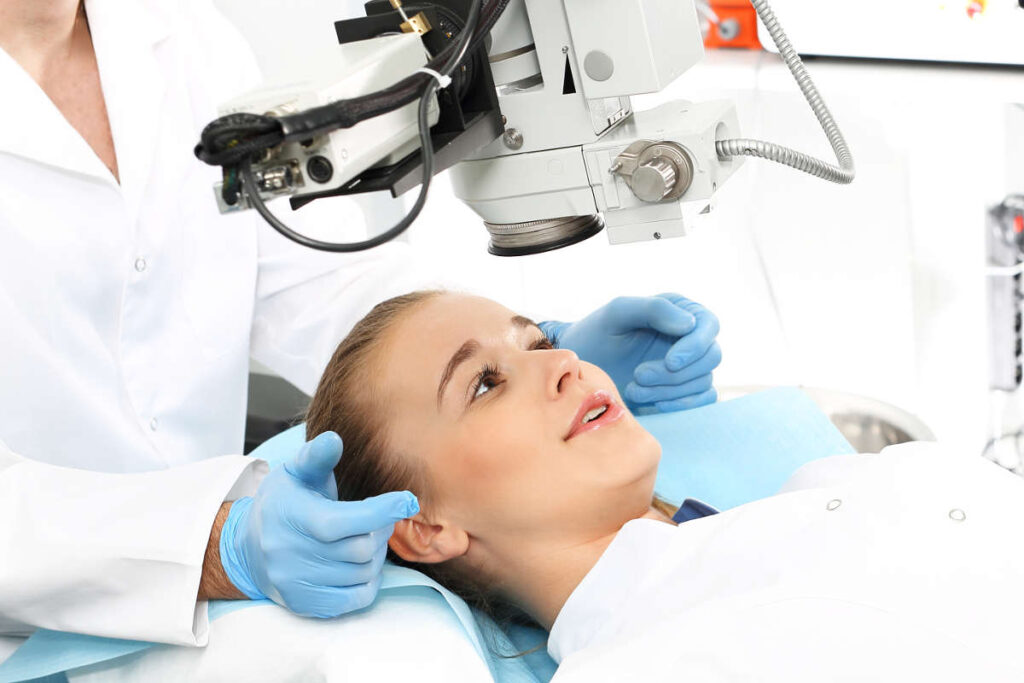“Am I a good candidate for refractive surgery?”
A good question that we get asked all the time. What makes someone a good candidate vs a poor candidate?
There are a lot of factors that go into refractive surgery considerations, such as prescription, corneal curvature, corneal thickness, dry eye, overall eye health, expectations, age, stability of prescription and more!
“If I am interested in LASIK, what do I need to do?”
When you schedule your annual health examination with us, you’ll want to let the staff know before you arrive, if possible. This allows us to make sure we have a few more things prepped to make sure we can determine your candidacy a little more smoothly before we even discuss sending you to see our surgeons for the final consultation.
“Will I ever need glasses ever again after surgery?”
I always tell patients that if you go into surgery with the idea that you’ll never need glasses or contacts ever again, then you will come back very upset. The reason for this is because once you are in your 40’s and onward, you will develop a normal eye condition called “Presbyopia.” You can check out the blog post I wrote on that subject here.
The truth is that you WILL need glasses eventually, but those will be reading glasses and in some cases, computer glasses. You’ll also want to make sure you have a nice pair of sunglasses after surgery to celebrate!
Does LASIK Need To Be Redone?
“My dad had LASIK in 2000 and he said it was great for about 10 years! Then he needed it to be redone. Will that happen to me?”
Sadly, I can’t predict the future. But what I can tell you is that LASIK and PRK are far more accurate than they were back in the earlier days of the surgeries. The touch up rates have dropped dramatically with the advances in technology. We rarely send patients to have touch ups done because patients tend to not need them (in reference to patients who had surgery in the last 10 years).
“What’s the difference between LASIK and PRK?”
To put it simply, LASIK and PRK are surgeries that utilize the same laser in two different ways to accomplish the same goal. Still confusing, but a little less so once you’ve got a slightly better idea of what that statement means.
LASIK is a surgery that requires two lasers. One to create a small flap incision in the cornea (the front of the eye), and another to polish and reshape the cornea to correct your prescription. After the laser treatment, the flap is laid back down over the treatment area and your corneal healing will take place underneath the flap.
PRK is a procedure that requires the surgeon to lightly remove the top layer of surface cells called the epithelium. They then use the same laser as in LASIK to reshape the cornea to correct your prescription. Afterwards, a bandage soft contact lens is placed on top of the cornea to allow the healing process to begin for the first week.
Both surgeries have their pros and cons to them, but both are very safe and effective when compared at the 6 and 12 month marks.
“What are the possible risks or side effects of Refractive Surgery?”
The most common side effects are typically a bit of dry eye after surgery for the first few months. If you already have dry eyes, then this is something that we’ll need to treat prior to even considering surgery. If you have dry eye, then surgery will make it worse and much more difficult to manage.
Some patients also experience glare or halos around lights, especially around dusk or at night. These also typically subside after a few weeks but can last a few months. In rare cases they can be permanent, though this is less common with improvements in technology.
The most concerning risk is something called “Post-LASIK ectasia.” Ectasia is a condition where the cornea is no longer structurally sound and begins to thin and droop. This can cause major changes in someone’s vision over time and in some cases requires special contact lenses or surgery to manage.
Ectasia is less common now than it was in the earlier days of LASIK. With our advances in technology, we have a much better chance at finding patients who are poor candidates because our screening processes are more thorough and we’re able to obtain far more information.

